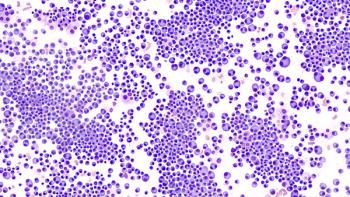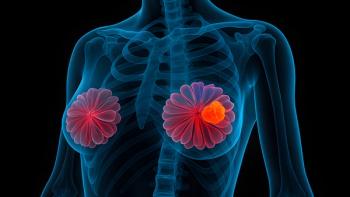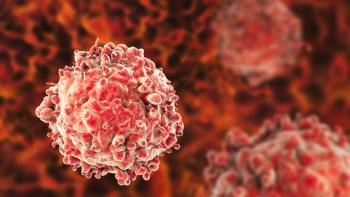
Studies Link Higher Vitamin D Levels With Improved Cancer Prognosis
Two recently published clinical studies demonstrated a strong association between higher levels of vitamin D and improved outcomes among patients with various cancers.
Two recently published clinical studies demonstrated a strong association between higher levels of vitamin D and improved outcomes among patients with various cancers.
In one study, researchers from the Institute for Nutritional Sciences at the Shanghai Institutes for Biological Sciences in China examined circulating 25-hydroxyvitamin D [25(OH)D] levels among 17,332 patients with different tumor types across 25 studies. Vitamin levels were measured at or near diagnosis (J Clin Endocrinol Metab. doi:10.1210/jc.2013-4320).
Overall, the meta-analysis showed that a 10-nmol/L increase in circulating 25(OH)D levels was linked to a 4% improvement in overall survival.
The strongest association between vitamin D levels and improved overall survival (OS) was observed in patients with colorectal cancer, breast cancer, and lymphoma. In these groups, the pooled HR for OS for the highest versus the lowest quartile of circulating 25(OH)D levels was 0.55, 0.63, and 0.48, respectively. A positive correlation was also observed in patients with lung cancer, gastric cancer, prostate cancer, leukemia, melanoma, or Merkel cell carcinoma; however, the connection was not as strong.
In a second study, researchers found that men at high risk of prostate cancer who had a vitamin D deficiency are more likely to have aggressive disease at diagnosis (Clin Cancer Res. 2014;20(9):2289-2299).
The researchers examined serum 25(OH)D levels in 667 high-risk men who were screened for vitamin D deficiency prior to receiving their first prostate biopsy. The men, aged 40 to 79 years, had elevated PSA levels and other prostate cancer risk factors.
“This is the first study to look at vitamin D deficiency and biopsy outcomes in men at high risk of prostate cancer,” said senior author Rick Kittles, associate professor in the department of Medicine at the University of Illinois at Chicago. “Previous studies focused on vitamin D levels in men either with or without prostate cancer.”
Among the study population, African American men with 25(OH)D <20 ng/mL had 2.43 increased odds of receiving a prostate cancer diagnosis of any stage (P = .01). Additionally, African American men with 25(OH)D <12 ng/mL were 4.89 times more likely to have a Gleason score ≥4+4 (P = .006) and 4.22 times more likely to have a tumor stage ≥cT2b (P = .003).
European-American men with 25(OH)D <12 ng/ mL were 3.66 times more likely to have a Gleason score ≥4+4 (P = .008) and 2.42 times more likely to have a tumor stage ≥cT2b (P = .008).
The increased odds for aggressive disease among patients with vitamin D deficiency were established after adjusting for potential confounding factors, including obesity, smoking, family history, diet, and calcium intake.
“Vitamin D deficiency could be a biomarker of advanced prostate tumor progression in large segments of the general population,” said leader author Adam B. Murphy, MD, assistant professor in Urology at Northwestern University Feinberg School of Medicine, in a statement. “More research is needed, but it would be wise for men to be screened for vitamin D deficiency and treated.”
Nurse Perspective
Laura Newton, MA, RD
Assistant Professor
Department of Nutrition SciencesUniversity of Alabama at BirminghamBirmingham, AL
These studies not only demonstrate the benefit of higher vitamin D levels in certain types of cancer survival, but also highlight the overall prevalence of vitamin D deficiency. According to the National Health and Nutrition Examination Survey (NHANES) in 2005 to 2006, 41% of adults that participated in the survey had 25-hydroxyvitamin D levels below 20 ng/ mL (50 nmol/L).1 While the optimal serum level remains controversial, experts do agree that levels lower than 20 ng/mL are suboptimal (some feel the cutoff should be 30 ng/mL). Commonly associated with its role in bone health and calcium/phosphorus utilization, vitamin D is also thought to play a role in development of cancer through communication with cells to promote cellular differentiation, stimulate apoptosis, and decrease cancer cell growth.
Commonly thought of as the “sunshine” vitamin, skin exposed to sunlight can make vitamin D. Only a handful of foods are good sources of vitamin D. These include fatty fish (salmon, tuna, sardines), fish liver oils such as cod liver oil, eggs, and foods that have been fortified with vitamin D such as milk and some cereals and juices. The recommended daily allowance for vitamin D up to age 70 years is 600 IU/day and increases to 800 IU/day for those older than 70. A fat-soluble vitamin, there is risk of toxicity if taken in excess. The upper limit is currently set at 4000 IU/day.
There are several causes of vitamin D deficiency, including decreased intake, altered absorption (cystic fibrosis, celiac disease, Crohn’s disease, etc), little sun exposure, and decreased endogenous synthesis. Particularly those with little sun exposure and/or those living in the northern latitudes may be at risk for deficiency. Synthesis in the skin may also be affected by increasing age, the time of day receiving sun exposure, sunscreen use, length of sun exposure, and skin color (darker skinned people need longer sunlight exposure to trigger vitamin D production).
Being overweight or obese may also contribute to vitamin D deficiency as it then is absorbed into body fat instead of blood.
While much more research is needed on the role of vitamin D in cancer development, optimal serum levels, and the potential use of supplementation in cancer prevention and/or treatment, we should promote dietary intake of foods high in vitamin D and screening of those at risk for deficiency.
REFERENCE
1. Forrest KY, Stuhldreher WL. Prevalence and correlates of vitamin D deficiency in US adults. Nutr Res. 2011;31(1):48-54.
Newsletter
Knowledge is power. Don’t miss the most recent breakthroughs in cancer care.
















































































